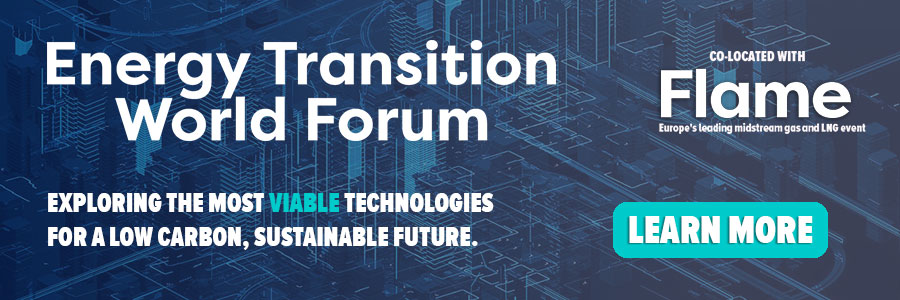2020年7月8日,欧盟委员会发布了关于欧盟能源系统一体化战略和欧盟氢战略的通信。
In a recent网络广播,Daria Nochevnik (Founder ECS Consulting), Nienke Homan (Regional Minister for the Province of Groningen, The Netherlands) and Ad van Wij (TU Delft/ Sustainable Energy Entrepreneur) discussed the future of clean and sustainable hydrogen in Europe. The webinar went on the specifically cover their views on the Commission's EU Energy System Integration Strategy, and what makes the Northern Netherlands conducive to the development of a green hydrogen economy.
不幸的是,我们没有得到公司的机会ver all the topics we wanted to cover, and we spoke with energy policies and market consultant, Andrei Belyi, to examine the EU's hydrogen strategy a bit further.
We spoke with Andrei about the challenges, barriers, and the costs of the EU hydrogen strategy moving forward.
Read the Q&A below.
Q: 这种策略的成本是多少?现有的天然气基础设施中有多少可以重新利用,建设专用的氢气基础设施将产生多少成本?
安德烈·贝尔伊:In one of his recent文章in洛杉矶论坛圈,Samuele Furfari – who is now Professor in Energy Policy at the University of Brussels – recalls that first discussions about possible hydrogen development occurred back in 1972 when the world was afraid of possible end of oil.
This historical perspective is important because hydrogen has indeed been known as an energy carrier for decades, but it always faced significant challenges for its extensive use in energy sectors.
Now, the EU has made a significant step forward by setting new, ambitious priorities. The new EU strategy implies development of new infrastructures, and the gas industry has already reacted by proposing a road map for hydrogen pipelines in Europe.
同时,据了解,现有的气体基础设施可能并不总是适合作为氢气易于泄漏,这可能非常难以检测。还涉及气体管中使用的钢的锰含量可以促进脆化。
Before achieving a pure hydrogen economy, an intermediary solution could be the so-called hydrogen-enriched natural gas (HENG). It consists of blending gas flows with hydrogen, where hydrogen constitutes from 5 to 20% of the flow, depending on safety standards in place.
然而,气态形状的氢气具有三分之一热值compared to methane. In market terms, adding 20% of hydrogen into gas network will lead to a loss of approximately 16% of calorific value per similar supplied volume. In this context, the questions which would naturally follow is how to incentivize gas suppliers and end users to use HENG?
However, HENG is not the final stop of the strategy. The EU has been explicit that green hydrogen will be a priority. And green hydrogen implies more electricity generation in the future. For example, if we look at the European Commission projections published in2018,the green hydrogen scenario requires an increase of EU electricity demand in final energy consumption from the current 21% to 43% by 2050.
Ultimately, this means an increase of annual power generation by some 1200 TWh - which should be ensured by carbon-neutral energy sources. There are many questions with regards to these ambitious targets in electricity generation.
So, the success of the EU hydrogen strategy will depend on national energy policies involving promotion of carbon-neutral electricity generation. Should member states favour on nuclear electricity for green hydrogen production being a cheaper option but with higher safety risks and low public acceptance? Or can the green hydrogen economy be solely based on intermittent solar and onshore wind?
最近HSBC report指出海上风电具有良好的负荷特性,是氢能发电的良好选择。然而,海上风电政策是欧盟面临的另一个挑战。尽管在风能方面取得了相当大的进展,但欧盟的装机容量却很小——其中大部分集中在北海——随着英国脱离欧盟,欧盟损失了多达20亿欧元42%的海上风capacities.
Q: What does the future gas grid will look like – two separate grids, one for (bio)methane and one for hydrogen, or all hydrogen? Does blending have any role to play?
阿瑟:在恒流的情况下,混合是键,因此用生物甲烷将氢混合将是理论上可行的,尽管混合两种导致热量损失。截至目前,生物甲烷市场一直在管道部门之外,主要以压缩天然气的混合物运输。
In the last few years there has been encouraging growth in the biomethane market, but its market expansion will be eventually restrained by the availability of biodegradable feedstock. However, in many countries, feedstock utilization for biomethane has been underutilized and therefore biomethane has an incremental potential. For example, in Estonia, only 15% of biodegradable feedstock is used, whereas biomethane already represents 40% of gas supplies for the road transport.
两种燃料将在运输业中竞争,因为许多国家的公共交通现在正在挥动生物甲烷。事实上,荷兰介绍了hydrogen2019年下半年的公交车。
问:在欧盟水平上缩放氢气并充分将氢气整合到内部能源市场中的挑战和障碍是什么?
阿瑟:The challenge of large-scale hydrogen utilization for energy is the lacking economy of scale and production costs of green hydrogen. Production volumes provide a clear indicator that hydrogen has not been integrated into energy markets at least up to now. Hydrogen is deemed to replace natural gas, but hydrogen production constitutes only 2% of the global natural gas market volumes and therefore economy of scale for hydrogen is still insufficient for European energy needs.
值得注意的是,氢气主要用于农业、炼油和氨生产中的肥料。因此,在氢能战略下,必然会出现供氢竞争使用。但是,扩大规模的主要挑战是无碳氢气的成本。yabovip188
来自电解过程的氢气产生 - 基于可再生能源产生 - 仍然是最昂贵的选择,因此电解代表全球氢生产的1%。
According to various scenarios, including the recent study produced by the International Energy Agency, hydrogen production from electrolysis would range from 2.5 till 4.5 Eur per kg of H2.In terms of energy market price, it gives a range between我们D 15 to 38 per mmbtu,whereas costs of the natural gas production are in the range $1-3 per mmbtu, market price on European hubs have rarely been above USD 7 per mmbtu.
领导欧盟竞争对手的上下文有利的差异很大差异,以自然气体为过渡燃料 - 这也提出了一个有趣的问题,即氢气的转向是否会阻碍欧盟的工业竞争力。
Instead, various methods of hydrogen extraction from natural gas are certainly more cost competitive compare to the green hydrogen. In a recent paper published inEnergy Conversion and Management,Sebastian Timmerberg,Martin Kaltschmitt和Matthias Finkbein展示了传统蒸汽甲烷重整的成本为1%至1.2 EUR2,甲烷分解系统的范围为1.6和2.2欧元H.2.
但是这些方法require carbon capture还有储藏室积极的欧洲的碳和捕获储存似乎是,在这些方法中的脱碳在这些方法中在经济不确定性的背景下争论。
Q: Do you believe that any issues will arise around guaranteeing that hydrogen has been sourced sustainably?
阿瑟:生产氢气的方法有很多种,所有的方法都需要加热。因此,碳足迹取决于产生热量的来源。
Scholarly works demonstrate that fossil-based hydrogen production may generate between 0.15 and 0.34 g of CO2 equivalent per kWh - the figures are equivalent for fossil fuels range of calorific values.A lot depends on the technologies used to produce hydrogen - for example, traditional steam methane reforming or processing gas through a plasma process (pyrolysis).
简而言之,从热解中的甲烷分解被认为是碳密集少于蒸汽甲烷重整,其中热量采用热量。简而言之,较少碳密集型技术的生产成本总是更高。
如果认真对待甲烷产生的氢气,那么为了评估天然气工业的总体温室气体排放量,我们需要考虑天然气链在达到制氢阶段之前的总体排放量。
例如,逃犯和排放甲烷的排放from production, transportation and distribution. Some recent observations reveal that Europe is the only continent where甲烷排放在其他地方,它们会上升。因此,困难在于确定排放源——是天然气供应的原产国,还是提供供应服务的公司?
事实上,温室气体排放的很大一部分要么源于上游水平的天然气燃烧和排放,要么以维护不善的管道的无组织排放形式出现在向家庭分配天然气的过程中,尤其是在新兴经济体。为制氢提供天然气的供应商肯定是从第三方购买管道天然气或液化天然气(LNG)的欧洲供应公司。因此,他们很少参与上游天然气燃烧和放空,也很少向家庭提供下游服务。因此,他们个人的碳足迹不会考虑天然气行业温室气体足迹的总体情况。
需要回答的一个有趣的问题是,你如何控制这些排放量大规模?由于氢气生产昂贵,因此较大的球员可能会控制其排放。这是否意味着较小的玩家将间接地激励猛烈煽动他们的天然气或以更高的逃逸排放销售它?
现在的问题是如何激励非欧盟供应商来削减其成本?或者,欧盟通过在中亚,北非,俄罗斯或美国的减少造成的排放来减少排放的努力。最近提供的数据由世界银行研究表明,过去十年中,天然气燃烧率有所上升,其特点是石油和天然气价格吸引力较低。因此,在欧洲转向氢经济——不鼓励非欧盟生产国在氢生产之外减少排放——甚至可能对全球气候中立产生反作用。
It all means that the External dimension of the EU decarbonisation strategy should play a bigger role in European agenda because most of methane and carbon dioxide emissions in the global natural gas industry occur beyond the EU.
Q: Are there any applications that you think the EU hydrogen strategy neglects or undervalues, for instance heating?
阿瑟:当然,外部维度是欧盟应该更加强调的重要领域。人们需要扩展原产地的担保的整体系统,以激励非欧盟生产者减少排放,否则欧盟氢策略将对全球碳中立力产生较小的影响。
然而,你关于取暖的观点确实是个大问题。我知道供暖问题是在我与立陶宛能源研究所的专家讨论时提出的,他们强调,夏季电力过剩可以产生氢气,然后在冬季用于整个波罗的海国家的供暖目的。
As heat supply is a very important component in in the region, it could offer long-term potential for security of supply. At the same time, we must understand that any energy innovation is not solely about good ideas and feasible technologies.
成功的一个关键因素是工业利益相关者实施想法的意愿,以及国家鼓励工业迈出第一步的意愿。或许,国家路线图将不得不考虑对利益攸关方的参与进行分析,以使雄心勃勃的目标与当地的现实相匹配,并找到适当的激励措施,增加利益攸关方的参与。
有兴趣进一步了解氢在可持续发展的未来中的作用吗?加入我们Energy Transition World Forum (ETWF).了解更多here.



























